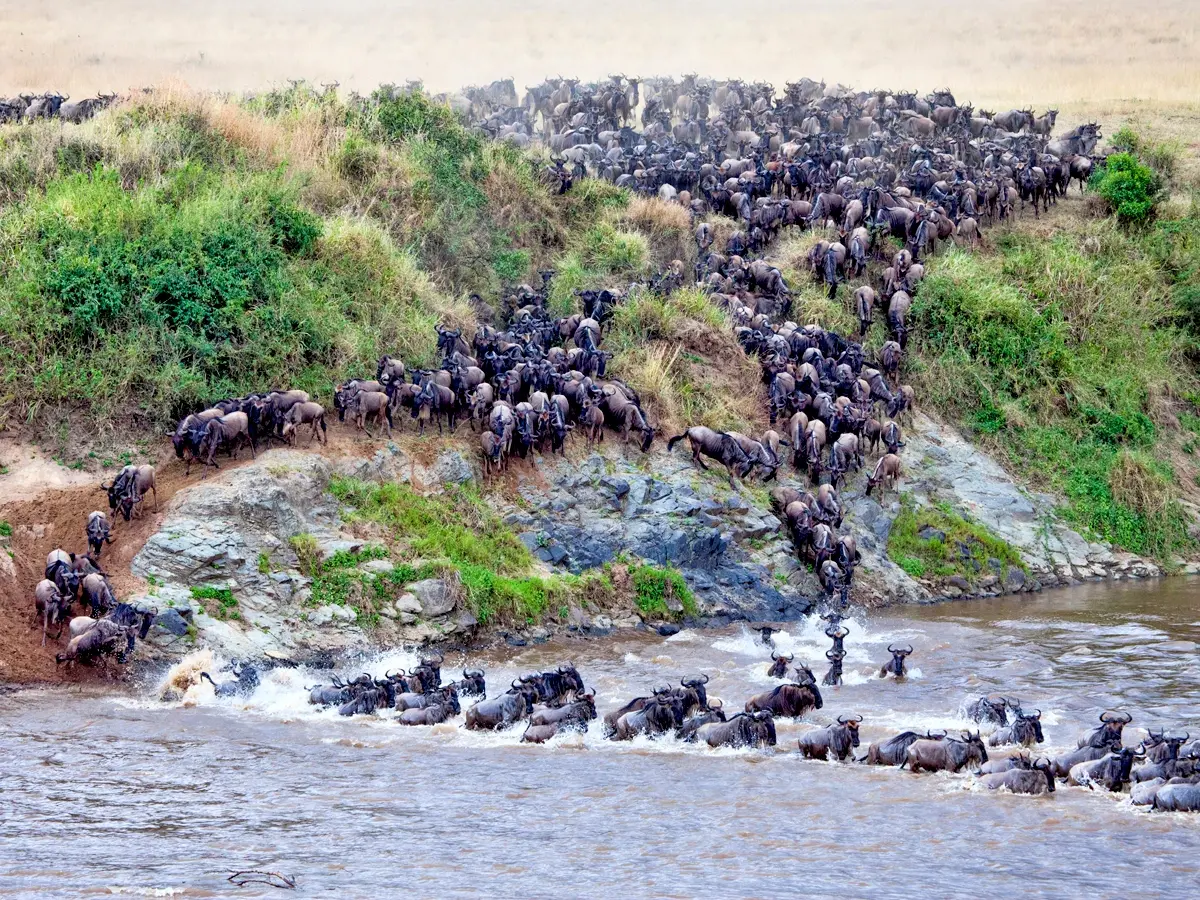
The Mara River, coursing through the Serengeti-Mara ecosystem in Tanzania and Kenya, is a lifeline for an extraordinary array of wildlife. This river is most renowned for its role in the Great Migration River Crossing, where millions of wildebeest and other herbivores make a perilous crossing, attracting numerous apex predators.
Let’s explore the most formidable predators that dominate this riverine environment, delving into their characteristics, behaviors, and roles within the ecosystem.
The Mara River originates in the Mau Escarpment in Kenya, flowing through the Maasai Mara National Reserve and the Serengeti National Park before emptying into Lake Victoria. This river spans approximately 395 km and is essential for sustaining the rich biodiversity of the Serengeti-Mara ecosystem. The river’s waters provide hydration to different species, support lush vegetation, and create a habitat for various aquatic life. The Mara River’s ecological significance cannot be overstated, serving as a critical resource for both resident and migratory species.
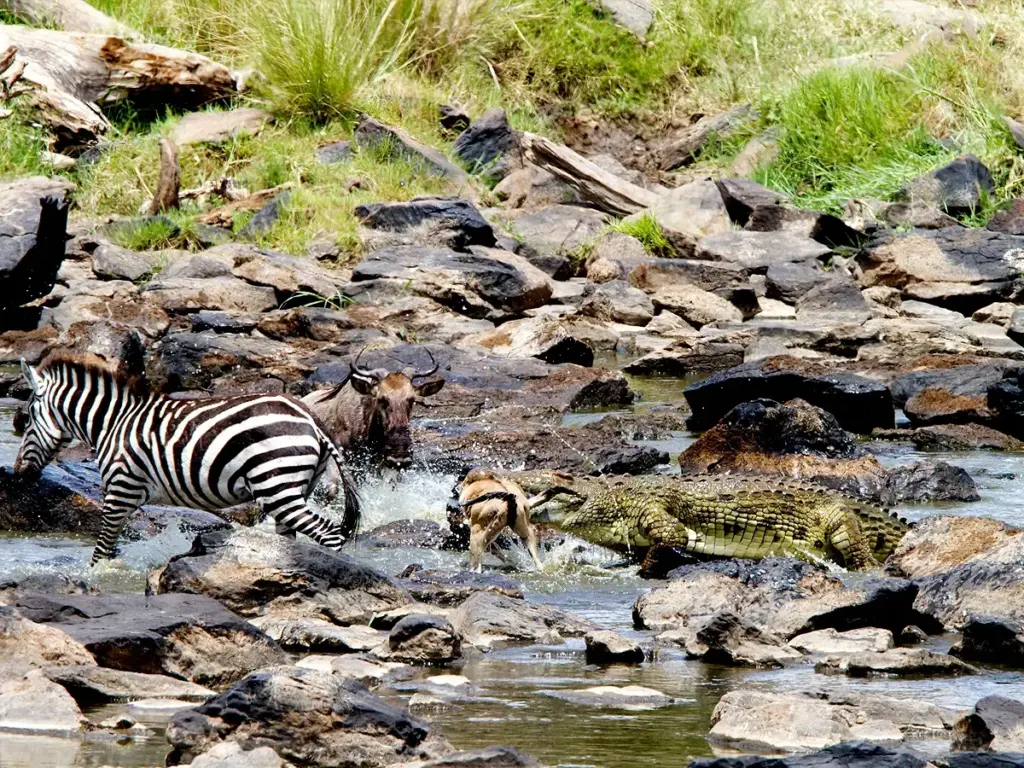
The Nile crocodile (Crocodylus niloticus) is the largest freshwater predator in Africa and a dominant force in the Mara River. These formidable reptiles are among the river’s most iconic inhabitants, particularly known for their ambush tactics during the Great Migration.
Nile crocodiles can grow up to 6 m long and weigh as much as 1,000 kg. Their olive-brown, armored bodies are perfectly adapted for a semi-aquatic lifestyle. With powerful jaws and sharp conical teeth, they are designed to seize and hold onto their prey with a vice-like grip.
These are clever predators that wait below the water’s surface close to riverbanks. They take advantage of the chaos that follows as zebras, wildebeests, and other herbivores cross the river during the Great Migration. These crocodiles strike with powerful attacks, moving near their prey with the help of their strong tails. Grabbing a limb or mouth, they drag their prey into the water and roll over to drown and confuse it.
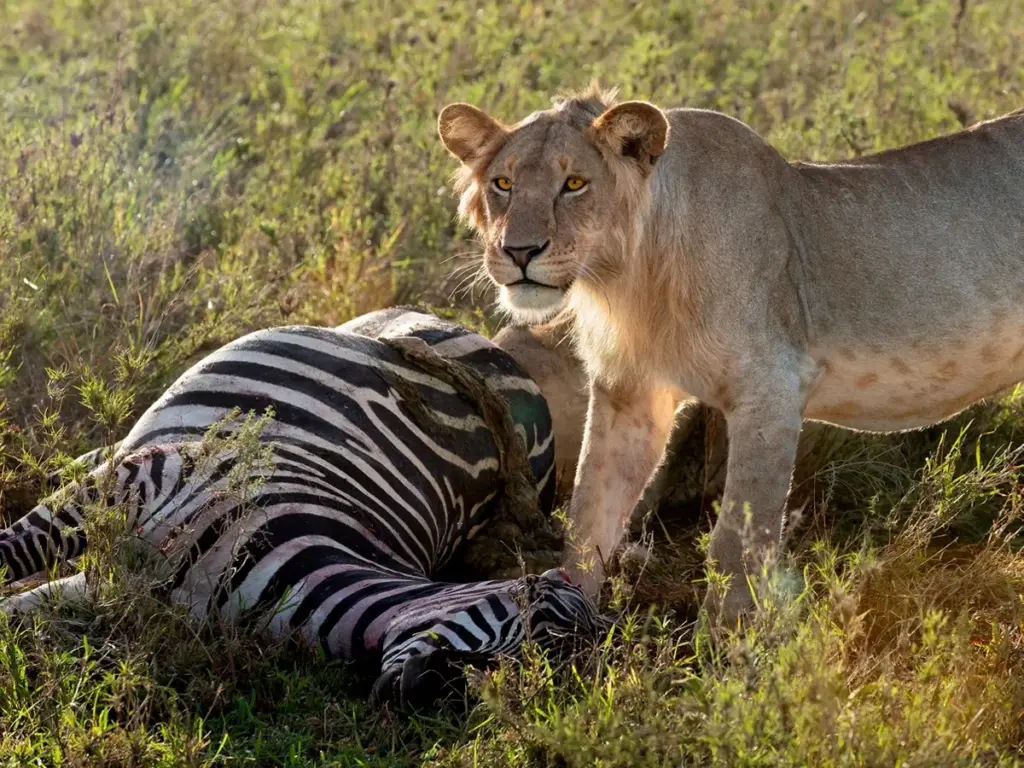
Lions (Panthera leo) are the dominant terrestrial predators in the Serengeti-Mara ecosystem. While they primarily hunt on land, the riverbanks become hunting grounds during the Great Migration. Lions take advantage of the vulnerability of herbivores at the river, often targeting those weakened or injured by their crossing.
Lions are large animals, with males typically weighing between 150 and 250 kg and females weighing between 120 and 180 kg. Male lions are distinguished by their large manes, which vary in color from blond to black and can help protect their necks during fights. Both sexes possess powerful forelimbs and sharp, retractable claws. They also have long and strong teeth adept at gripping and tearing flesh.
Lions are most active at dusk and dawn but can also be active at night. During the day, they often rest and conserve energy in the shade. Their roars can be heard up to 8 km away and serve as a means of communication, territorial marking, and intimidation of rival lions.
Lions are apex predators primarily known for hunting large ungulates such as zebras, wildebeest, and buffaloes. They employ a cooperative hunting strategy, where several pride members work together to stalk and ambush their prey. The lionesses usually take the lead in hunting due to their lighter build and greater agility.
A lion’s diet can also include smaller animals, carrion, and, occasionally, scavenging from other predators’ kills. They can consume up to 40 kg of meat in a single meal, and their powerful jaws and digestive systems are adapted to break down large amounts of protein and bone.
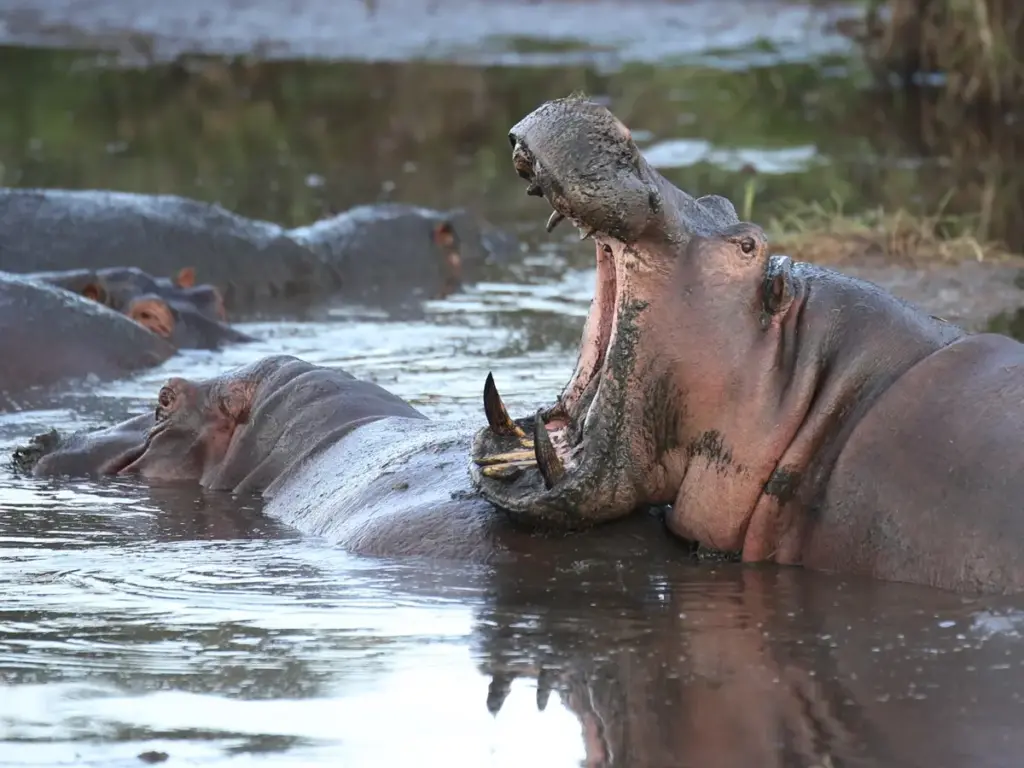
The hippopotamus (Hippopotamus amphibius) is often perceived as one of the apex predators of the Mara River, despite its herbivorous diet.
Hippos can be fiercely aggressive, particularly when their space is threatened. They are equipped with large, powerful jaws and sharp teeth, capable of inflicting serious harm on perceived threats, including humans and other animals. This aggressive behavior establishes them as dominant forces in the river ecosystem, effectively controlling access to water resources.
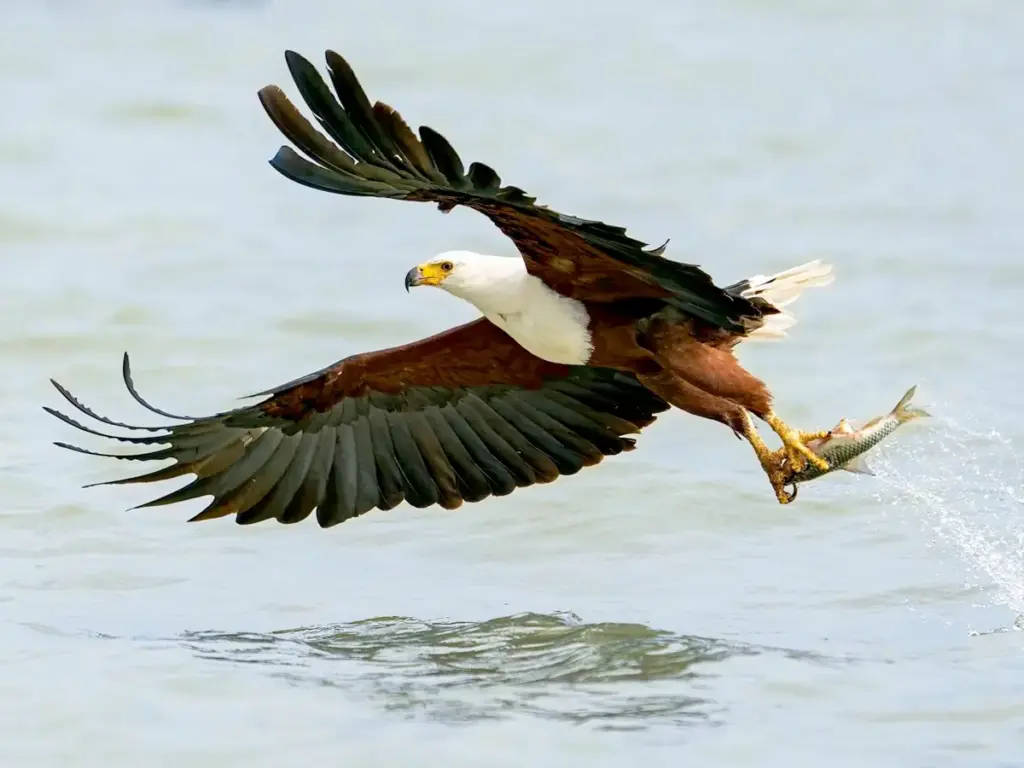
The African Fish Eagle (Haliaeetus vocifer) is a significant aerial predator along the Mara River, known for its distinctive call and impressive hunting skills.
African Fish Eagles are large birds of prey, with wingspans reaching up to 2.4 m. They have striking plumage: a white head and tail, a dark brown body, and powerful yellow talons. Their keen eyesight allows them to spot prey from great distances.
These eagles primarily hunt fish, swooping with remarkable precision to snatch their prey from the water. They can carry off fish weighing up to 2 kg. Besides fish, they also prey on birds, small mammals, and carrion when fish are scarce.
African Fish Eagles help control fish populations, preventing overpopulation and maintaining ecological balance. Their presence indicates a healthy ecosystem, as they require clean waters and abundant prey to thrive. They also scavenge, contributing to the ecosystem’s cleanliness by consuming dead animals.
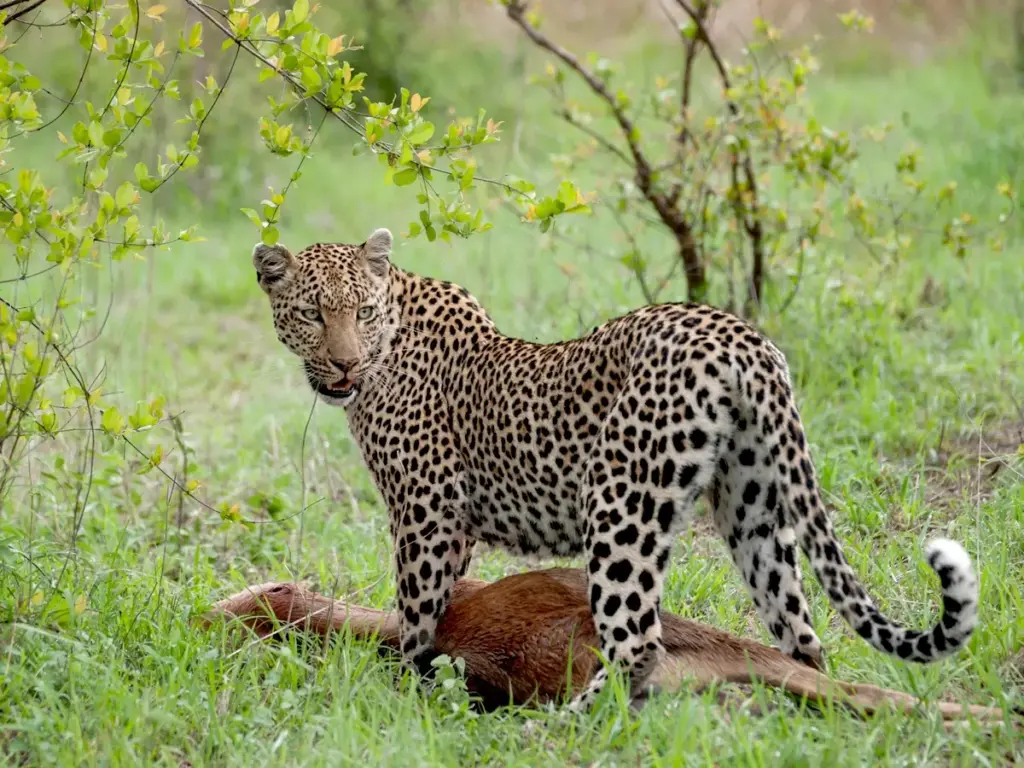
Leopards (Panthera pardus) are elusive predators occasionally seen near the Mara River. They are opportunistic hunters, preying on animals that come to drink. Leopards are incredibly adaptable and capable of hunting a wide range of prey, including fish, small mammals, and birds.
Leopards are medium-sized big cats, with males typically weighing between 50 and 90 kg and females weighing between 30 and 60 kg. They have a distinctive golden-yellow coat adorned with black rosettes, which provides excellent camouflage in their natural habitats. Their powerful, muscular build and retractable claws make them formidable climbers and hunters.
Leopards are opportunistic hunters with a diverse diet and a wide prey range. Their diet primarily consists of medium-sized ungulates such as impalas, gazelles, and bushbucks. However, when larger prey is scarce, they also hunt smaller mammals, birds, reptiles, and insects.
Their hunting strategy involves silently hunting their prey until they are within striking distance, then delivering a powerful bite to the neck or throat to suffocate the victim. Leopards often drag their kills into trees to eat in peace, away from scavengers like hyenas and lions. This arboreal habit is a key survival strategy, highlighting their adaptability and intelligence.
As apex predators, Nile crocodiles, lions, hippopotamuses, fish eagles, leopards, and hyenas play a significant role in maintaining the health and balance of their ecosystems.
Lions, out of all the other predators, affect the behavior of other scavengers. For example, their presence can limit the hunting territories of leopards and hyenas, leading to a more even distribution of predation pressure across the ecosystem. Additionally, lions’ kills provide food for various scavengers, including vultures, hyenas, and jackals, contributing to the nutrient cycle.
Nile crocodiles play a crucial role in maintaining the balance of the riverine ecosystem. They help control the populations of fish, amphibians, and terrestrial animals that venture to the water’s edge. Additionally, feeding on carrion contributes to the river’s decomposition process and nutrient cycling.
The interactions between predators in the Mara River ecosystem offer a captivating glimpse into the intricate web of predator-prey dynamics. Crocodiles play a crucial role as apex predators, lurking beneath the water’s surface and ambushing wildebeest and zebras during their annual migration across the river. These massive reptiles rely on stealth and the element of surprise, often resulting in dramatic and intense encounters.
Hippopotamuses’ sheer size and powerful jaws make them formidable opponents. They sometimes clash with crocodiles over territory. During migrations, hippos may inadvertently create opportunities for crocodiles by pushing prey into deeper waters.
On the riverbanks, leopards lie in wait, utilizing their remarkable stealth and agility to ambush smaller mammals and birds that come to drink. Their ability to climb trees allows them to avoid competition with crocodiles and other terrestrial predators while providing a vantage point for spotting potential prey.
In the skies above, fish eagles soar, their keen eyesight allowing them to spot fish and smaller aquatic creatures from great heights. These raptors dive precisely, snatching prey from the water’s surface with their sharp talons. Their presence adds another layer of competition, particularly with fish and other avian predators.
The entire experience along the Mara River is a vivid display of survival, where each predator has carved out a niche in the ecosystem. The competition for food is fierce, with each species adapting unique hunting strategies and behaviors to coexist. Observing these interactions offers a profound understanding of the delicate balance within this remarkable natural environment.
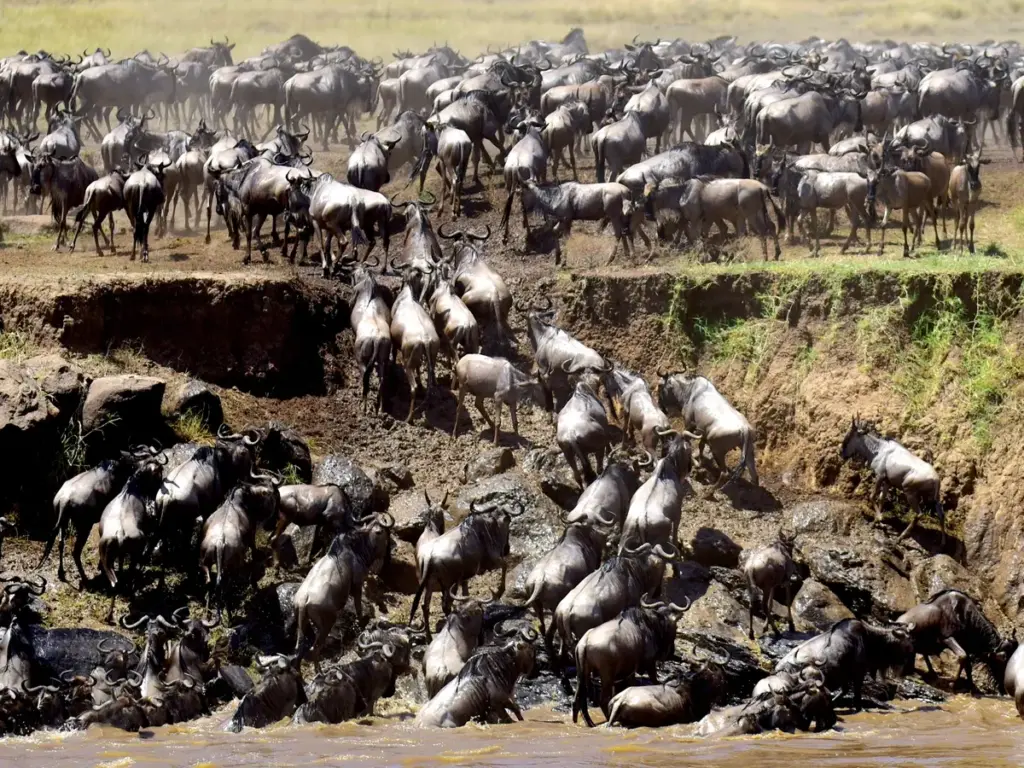
Nestled near the Mara River in the Northern Serengeti, One Nature Mara River Lodge offers a sanctuary of tranquillity amidst the wild wonders of East Africa. Situated in a prime location, the lodge provides guests unparalleled access to the awe-inspiring spectacle of the Great Migration River crossing, ensuring year-round breathtaking views.
Beyond its strategic location and unrivaled views, One Nature Mara River Lodge is committed to sustainability and conservation, ensuring that the beauty of the Serengeti-Mara ecosystem is preserved for generations to come. With its dedication to environmental stewardship and exceptional hospitality, this lodge truly embodies the spirit of Africa’s wild beauty, inviting guests to connect with nature in its purest form.